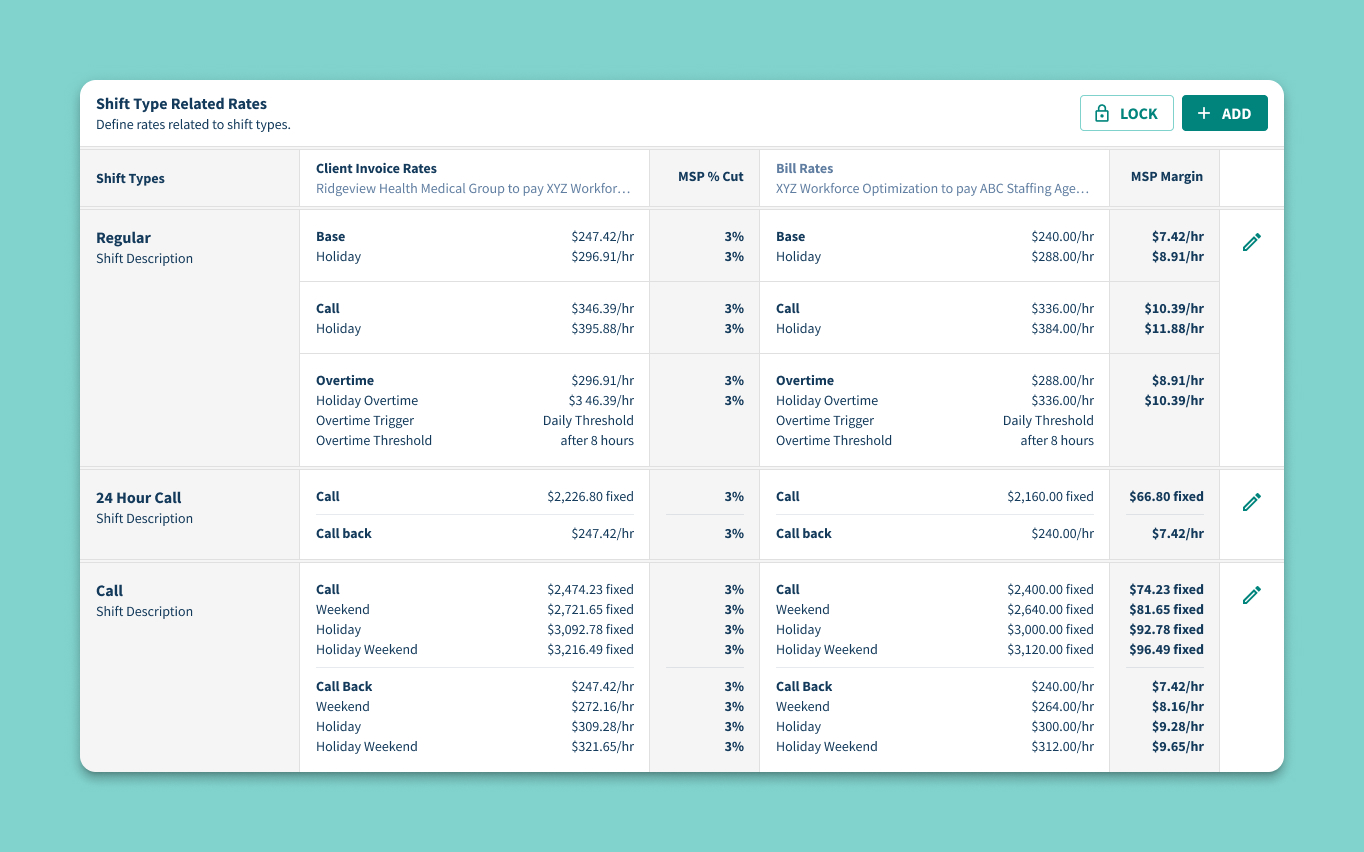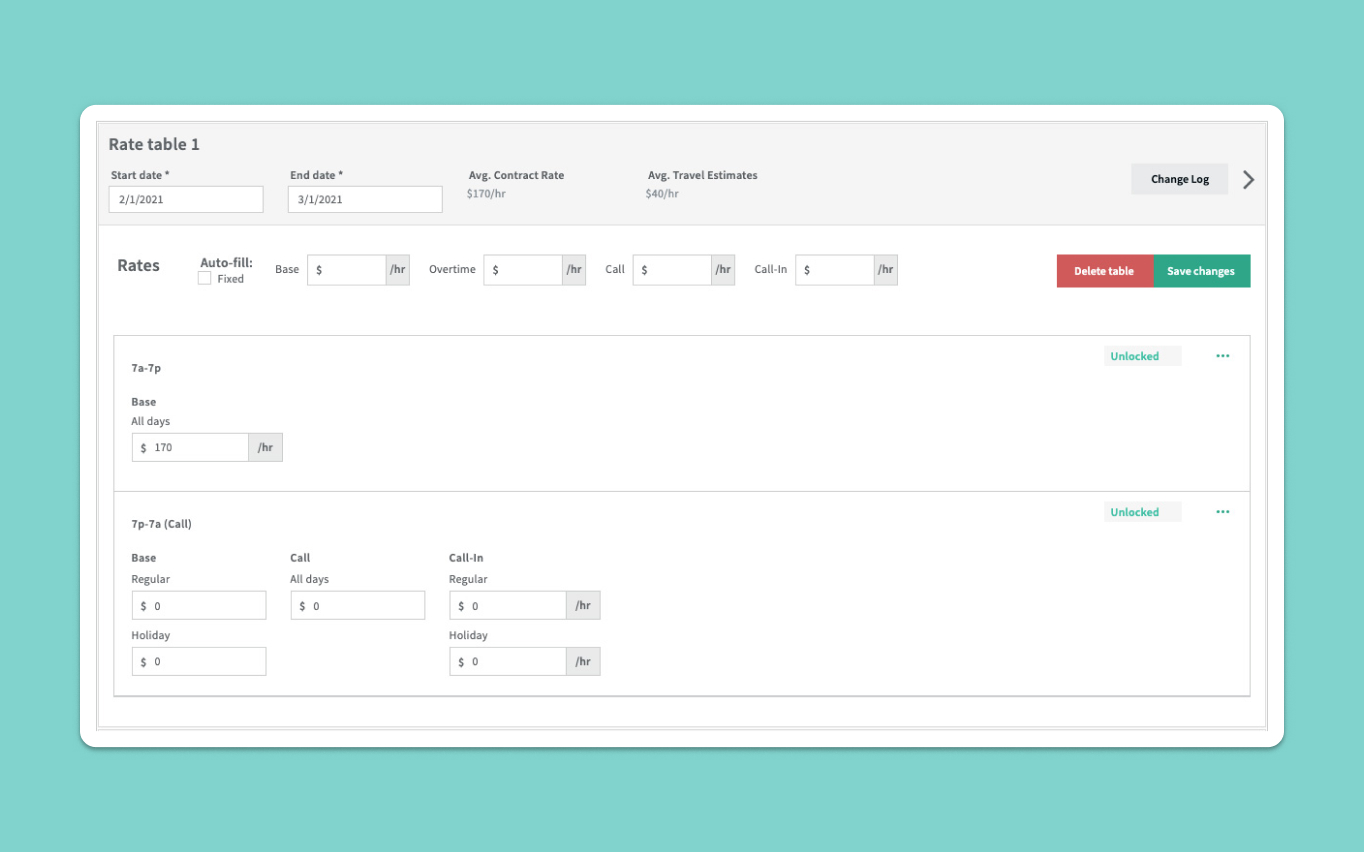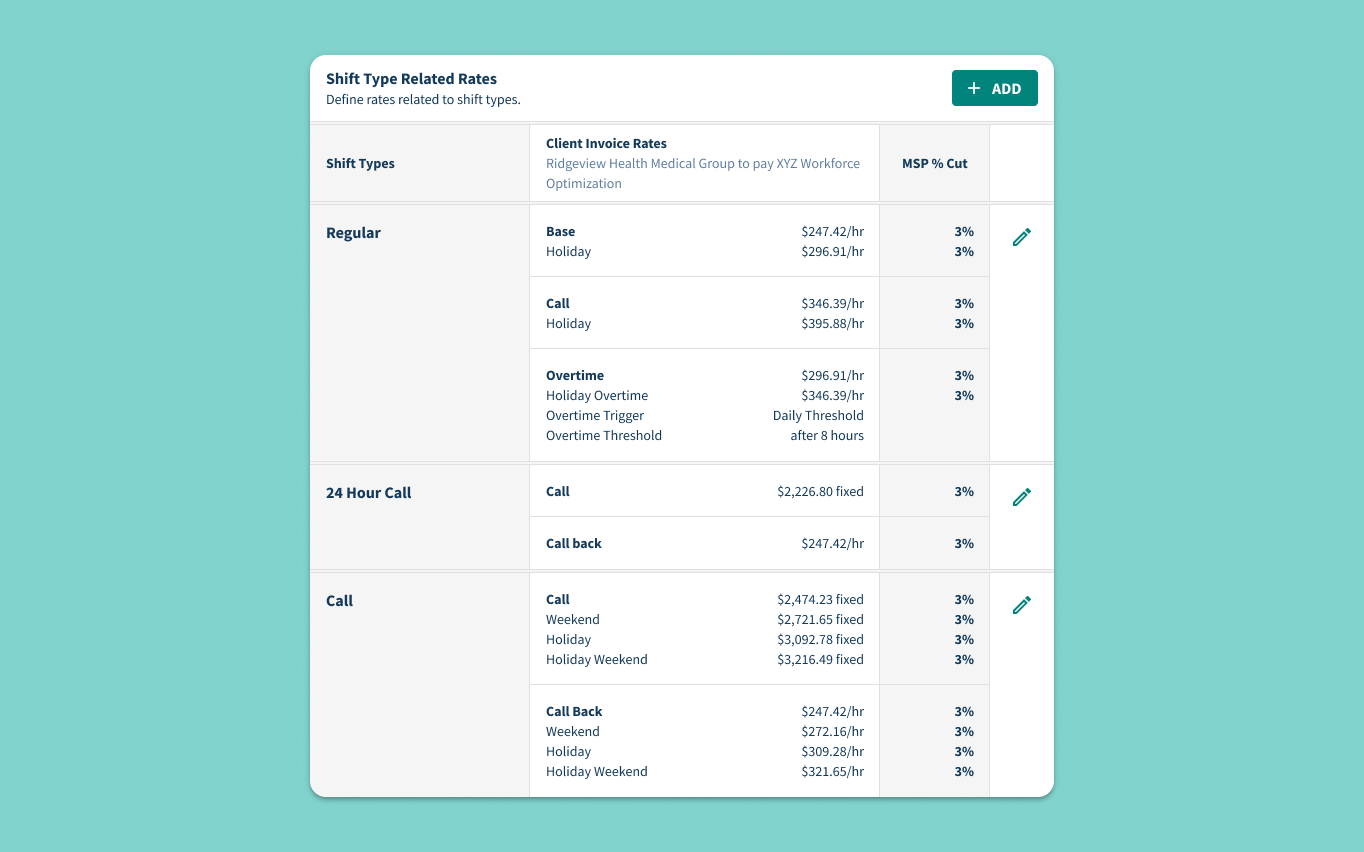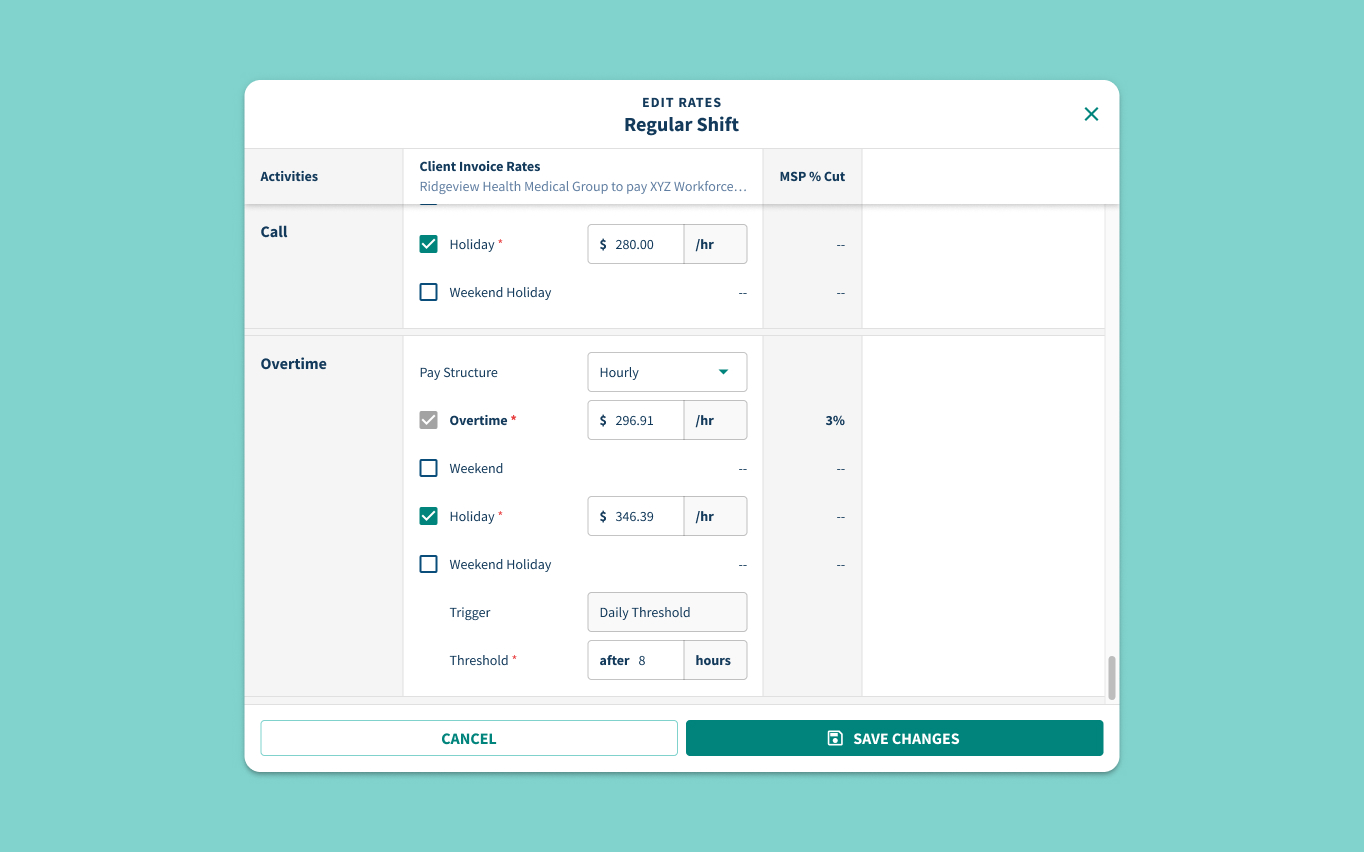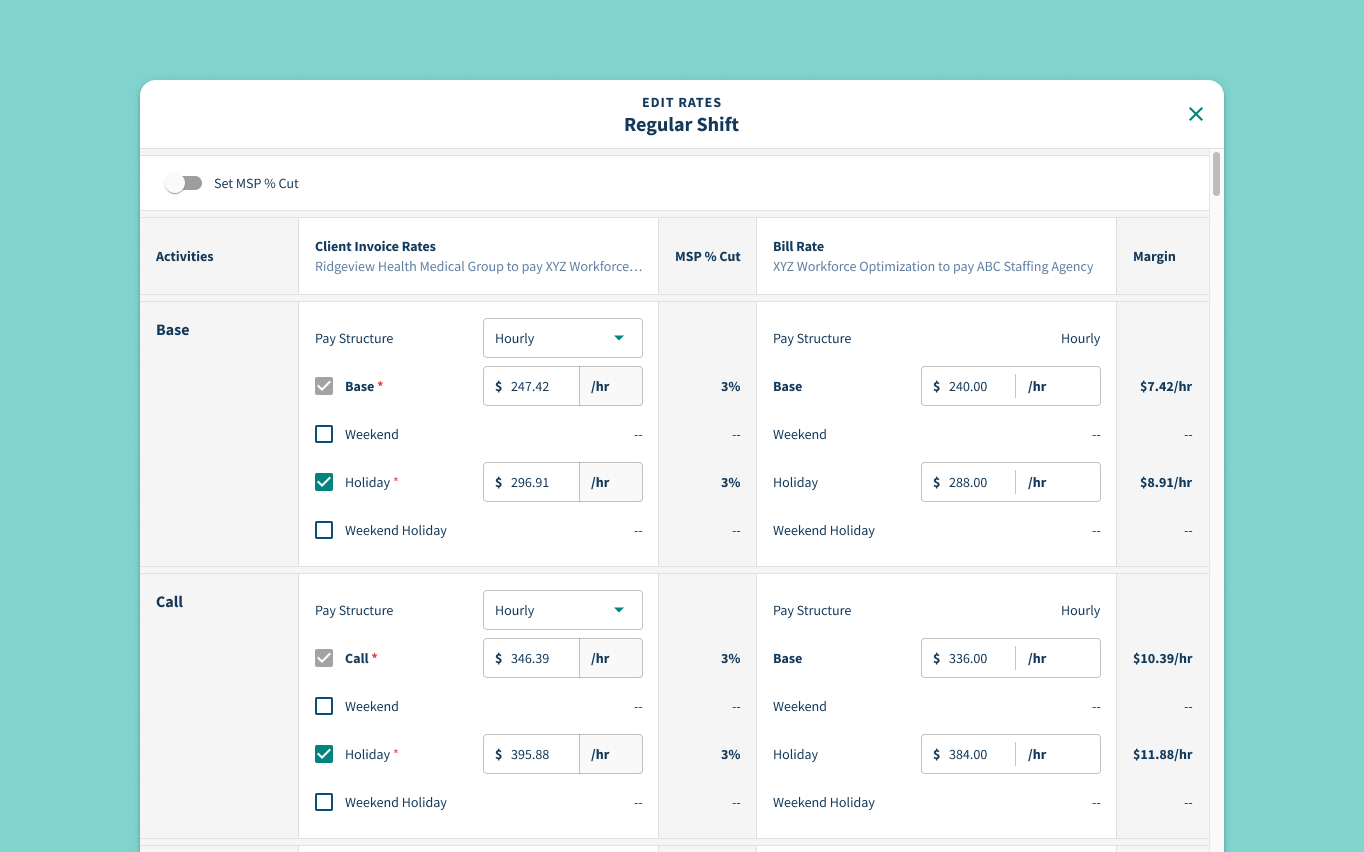Managed Service Providers (MSPs) use the platfrom to manage healthcare staffing, but the platform lacked the tools to handle complex rate structures. I designed a flexible rate management system that brought billing, margins, and overtime logic into the product — improving accuracy and setting the foundation for future financial workflows.
MSPs had no way to differentiate between what hospitals were billed and what staffing agencies were paid. Rates had to be entered manually on every shift, overtime wasn’t handled automatically, and changes weren’t tracked. The process was slow, error-prone, and often managed outside the platform — leading to friction for both users and internal teams.
We redesigned the rate experience to support dual-rate entry (client rate + MSP fee), placement-level rate setup, reusable shift-type templates, overtime threshold rules, and a built-in change log. The design balanced clarity and control, and was intentionally built to scale — creating a flexible foundation that can support more rate structures and relationship types in the healthcare space over time.
